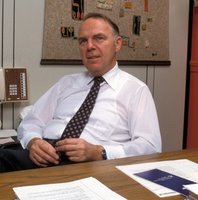
Europeans like to look down on us Americans for our lack of a developed culture. In their eyes, our young country is light years away from equaling, let alone surpassing, the artistic output of DaVinci, Beethoven, Rembrandt, Shakespeare, Verdi, Hugo, Tolstoy, etc. In their place, we offer Hemingway, Faulkner, Gershwin, Fitzgerald, O’Neill, Wyeth, Copland, and Bernstein – good artists all, but a bunch of second stringers compared with the European masters.
The Europeans are right. What’s worse, the gap is growing, not shrinking.
For a while, things looked promising. American musical theater, at its best, far surpassed European operetta in every aspect. In Fred Astaire America had the greatest dancer of the century (according to Baryshnikov). Homer and Benson, if not in the same league as Van Gogh and Gainsborough, were respectable painters. In the motion picture art, Hollywood reigned supreme, partly because of talent imported from Europe.
Then in the 70s, everything started going downhill. Just as we were learning how to emulate and in some cases improve on European art forms, Europe lost its cachet among Americans. The waves of European immigrants who settled here in the early twentieth century were followed, six decades later, by waves of immigrants from Latin America and the Caribbean. These new Americans had a culture of their own, and it was not the culture of Ibsen and Trollope. Also, the empowerment of African-Americans meant that their musical tastes would gain commercial clout, and rhythmic beat, the louder the better, won out over melody – in a sense, Kenya winning out over Vienna (and over Scott Joplin).
Then there was the fallout from the protest movements of the 60s, which were not just about Vietnam and Lyndon Johnson and the establishment, but, by extension, against the body of music and art and drama favored by the establishment. It was time to trash the old icons and to exalt the raunchy (“Deep Throat”) and the tasteless (“Hair”).
A piece in the Wall Street Journal the other day says it all. The Journal reports that dance is disappearing from the American cultural landscape. Ballet theaters are folding their tents, and on television the only dancing is that seen in “Dancing with the Stars,” in which the attraction is the stars, not the dancing. The movie musical, except for the occasional curiosity like “Chicago,” is dead. Fred Astaire, if he were alive and young today, could not get a job in entertainment. He would probably become an insurance agent in Omaha.
Another grim sign is the shrinking supply of radio stations specializing in classical music. Greater Boston’s WCRB, long a landmark at 102.5 MHz, is the latest to succumb to the dumbing-down tide. (They say it’s just a move to a new location and a new spot on the dial, but the vibes are bad.)
Robert Altman died the other day, and an e-mail correspondent and I were lamenting his loss. But more than the loss of one great film director is involved. As the artistic giants of this country die off, one by one, the culture that they represented is passing with them. Given the changing face of our population, it is likely that the Euro-centric culture of the American twentieth century is disappearing for good. Measured against the titans of the Renaissance, then, we have lost the race. I find that sad, but I am probably in the minority.




